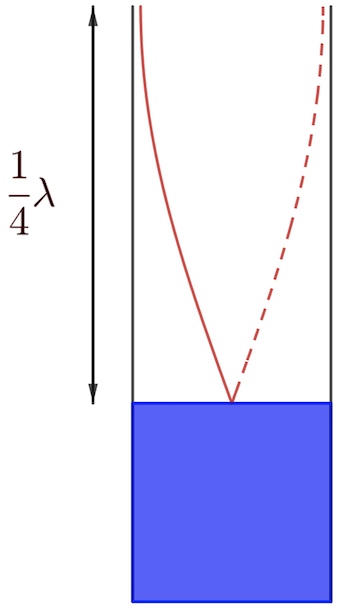For sound waves, we learnt that the compressions (position of maximum pressure) and rarefactions (minimum pressure) occur at the equilibrium position of the displacement of particles. This suggests that the pressure would vary the most in a stationary wave at the nodes of displacement. Right in the middle between two adjacent displacement nodes is the displacement antinode and we should expect the pressure variation to be the minimum there.
A displacement node is a pressure antinode.
A displacement antinode is a pressure node.
The standing waves associated with resonance in air columns can, therefore, be visualized in terms of the pressure variations in the column. Daniel A. Russell from The Pennsylvania State University made a wonderful animation showing how the variation of pressure occurs along an air column. (Link here)
It is a common misconception, even among physics teachers, that if a microphone is moved along the air column, it will pick up the loudest sounds at the displacement antinodes. However, according to Young & Geller (2007), College Physics 8th Edition, Pearson Education Inc. (pg 385), microphones and similar devices usually sense pressure variations and not displacements. In other words, the position within a stationary sound wave at which the loudest sound is picked up is at the displacement nodes which are the pressure antinodes.
Update: I made a GeoGebra interactive version of this animation of a stationary longitudinal wave.
Also check out my animation for a progressive longitudinal wave.

